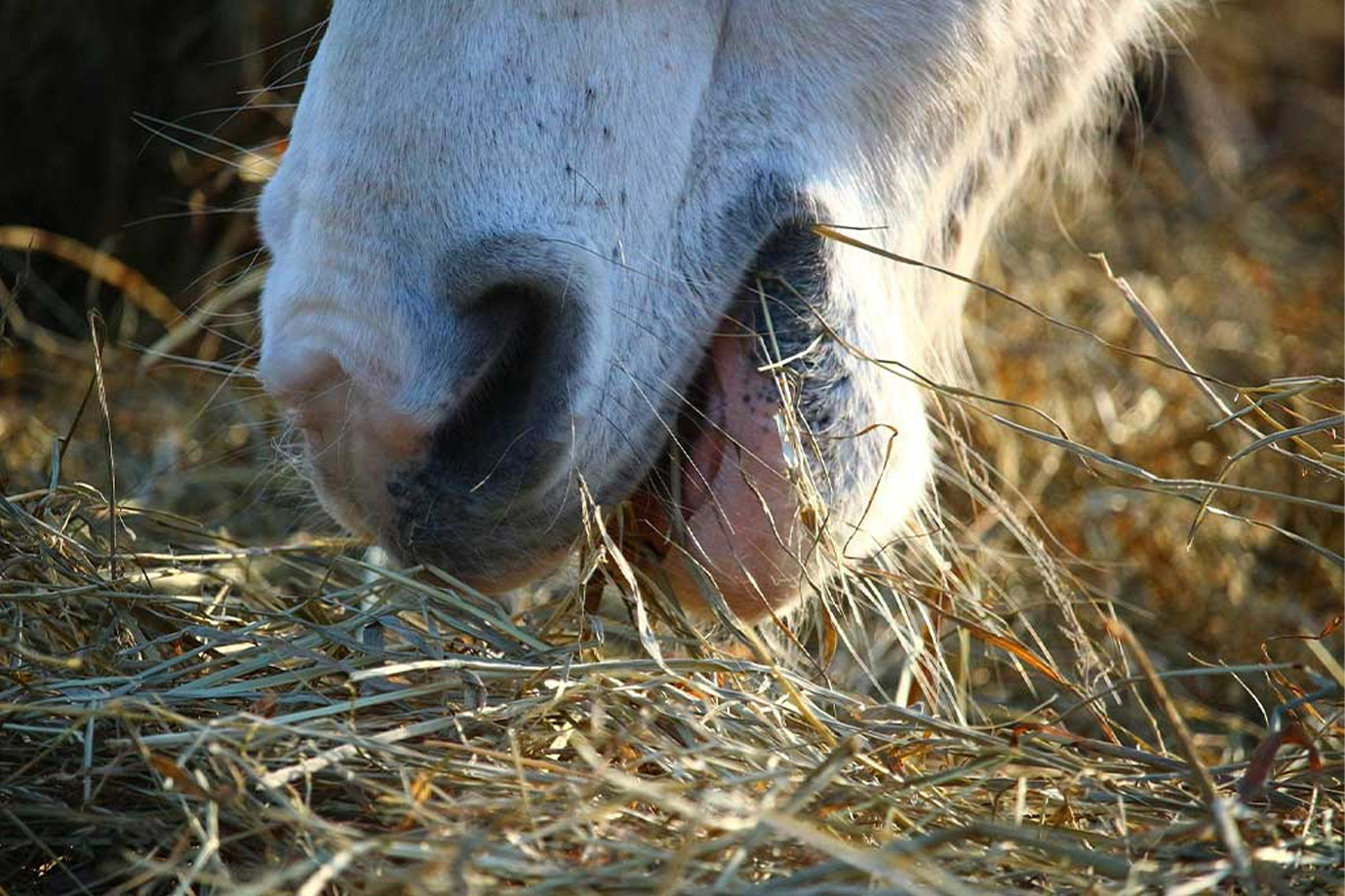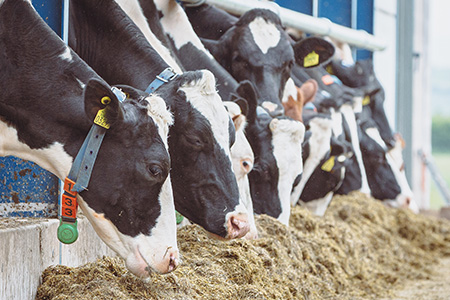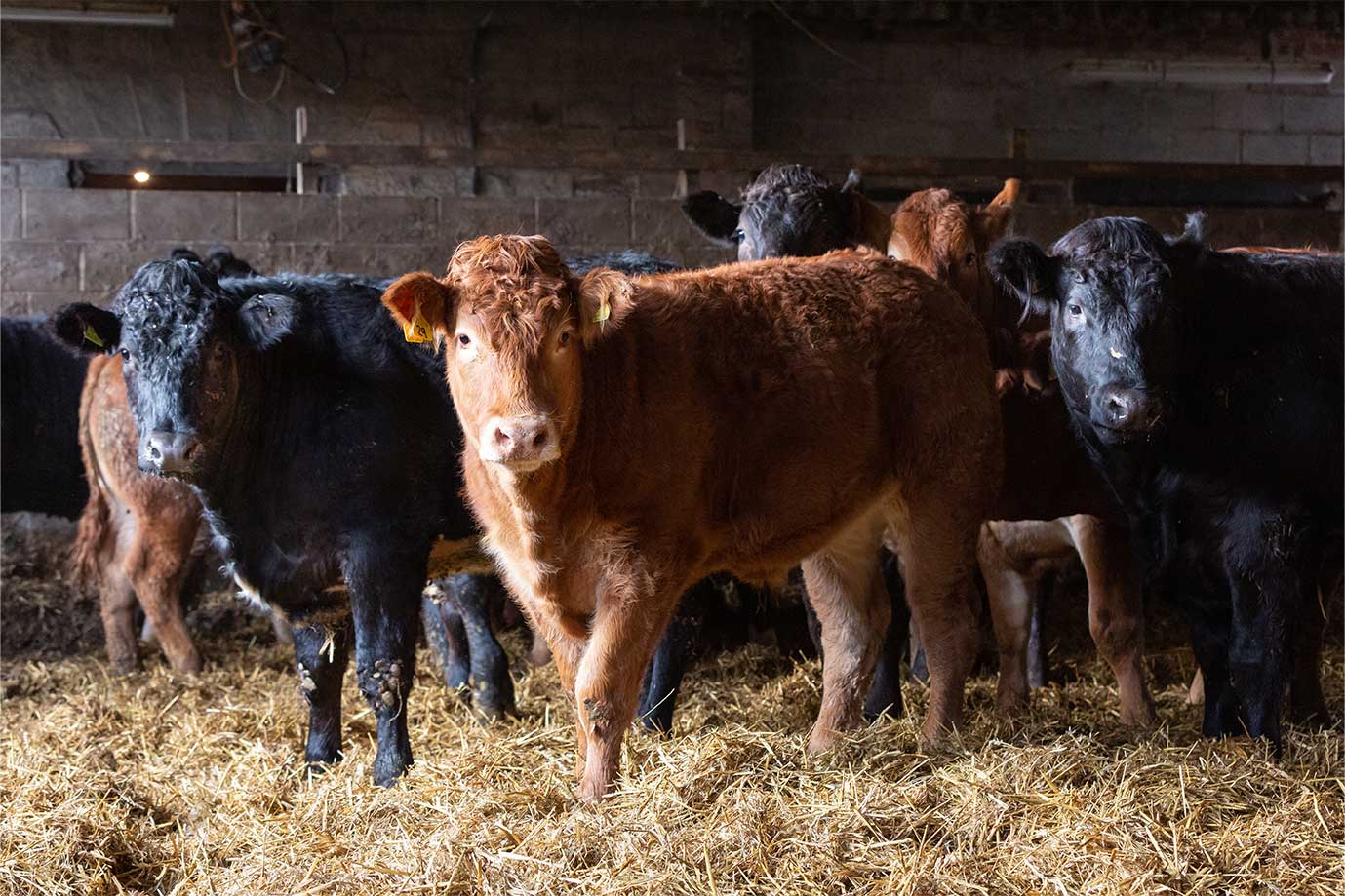Facts about Forage and Fibre

Not all fibre is the same
Digestibility is a key concept in determining the quality of a fibre source. In principle, the more digestible a fibre is, the more energy and to some extent nutrients, it provides to the horse. Pectin is a very digestible type of fibre and is found in higher levels in sugar beet whereas cellulose is a much less digestible type of fibre. High levels of lignin, an indigestible substance that gives a plant structure, significantly reduces the digestibility of a forage. The older and taller a plant gets, the more lignin is present which is why hay is less digestible than dried grass that has been harvested when the grass is young.
Digestibility of Fibre Spectrum
ALFALFA |
GRASS |
STRAW |
| Provides a relatively high amount of energy but with very low levels of starch and sugar | Higher in sugar than alfalfa which helps to make it very palatable but not as suitable for those that need low sugar diets | Low in starch and sugar but low in energy too – ideal for good doers |
| High temperature dried so very clean – ideal for the performance horse or horses with RAO | High temperature dried so very clean – ideal for the performance horse or horses with RAO | Sun-dried so better suited to leisure horses |
| Naturally abundant in calcium - good for hooves and acts as a natural buffer to acidity in the gut. | Contains less calcium than alfalfa so not as good a buffer | Much lower levels of calcium and other minerals |
Key things you should know about forage!
The term forage is generally used to describe the parts of plants that are above the ground that contain a significant proportion of fibre. The most common sources of forage for horses are grass, legumes such as alfalfa, and cereal straw. It is important to consider that forages are not just fibre, they contain other nutrients such as protein, minerals and sugar too. The climate in the UK means that it is necessary to use conserved forages at certain times of the year when availability of fresh forage is reduced. Forages may be harvested as young plants which tends to be the case for alfalfa in the UK as well as some grass or, they can be allowed to mature to create hay, haylage or even silage.
Why is forage so important?
Just about every article on feeding will include a mention of the importance of fibre for the horse and rightly so. The horse is an herbivore and therefore has a digestive system that functions best on an almost continuous supply of fibrous material. Some of the effects of too little fibre in the diet include:
- Increased acidity in the stomach – the saliva produced by chewing forage neutralizes acidity in the stomach.
- Gastric ulcers seem to be exacerbated by exercising on an empty stomach – a couple of handfuls of fibre before exercise can help to stop the acid splashing about and causing ulcers
- Colic – just as for humans, fibre in the diet helps to promote regular bowel movements which push gas and material through, and out of, the gut. Too little fibre can result in a build-up of gas or an impaction, neither of which are good news for the horse
Forage - the Good, the Bad and the Ugly
There are two main criteria that determine the quality of a forage; its nutritional value and its cleanliness and the two don’t always go together. The first priority is that the forage is clean because it doesn’t matter how many nutrients it contains, if it’s dusty or mouldy it could result in respiratory issues.
What’s the difference between hay and haylage?
The principle of conserving forage is based on removing water or oxygen in order to stop the forage from moulding or decaying. When making hay, the water content is reduced to below 20% whereas haylage typically has a water content of between 40 and 50% which is not sufficiently dry enough to stabilize it and so it has to be wrapped to create an anaerobic (oxygen free) environment. There is a definite trend for so-called “haylages” to be drier and a more accurate name for them is “wrapped hay”. There is an important difference between haylage and a wrapped hay and that is that a wrapped hay won’t have undergone fermentation. This is evident from the analysis results where the sugar levels in wrapped hay are exactly what we expect from hay NOT a haylage. This also means that a wrapped hay is less acidic than a haylage.
Soak, steam or both?
Historically, soaking hay was done to improve its hygienic quality. The increase in availability of haylage (or wrapped hays) offered a less laborious alternative to soaking but as it is more digestible, it tends to do some horses and ponies too well. Steaming has become more practical too with the introduction of commercially produced steamers – gone are the days of pouring kettles of boiling water in a dustbin!
There have been several studies looking at the pros and cons of steaming. A recent study found sugars were only reduced by 3% in steamed hay compared to 34% in soaked hay so if you need to reduce sugar content in the hay, soaking is the most effective way to do this. However, submerging in water was found to increase the numbers of bacteria in the hay which may have repercussions for gut health. The researchers therefore advocated soaking first to reduce sugar content and then steam to deal with the microbial contamination.
Busting Myths about Fibre
Unfortunately a lot of myths abound about different fibre sources. The following information should clarify some of the most common!
Horses can’t digest fibre, can they?
Well not themselves no but they do have a population of microbes in their digestive tract that can, and the energy the microbes release from fibre is what the horse uses as fuel for work, maintenance or growth. The other key fact is that the horse’s digestive system is designed to slow the transit of fibre long enough for the microbes to break down the fibre and release the energy – if the horse’s gut was like ours, the bugs simply wouldn’t have time to do their work before the food passed through and out of the digestive system.
Sugar Beet contains sugar, right?
Er, no it doesn’t, well not much anyway, not by the time it has become a feed for horses and other animals. The sugar has nearly all been taken out for use in human foods and what is left is a really fibrous pulp. The pulp itself is less than 5% sugar so less than half the simple sugars found in most hays. Some sugar beet pulp has molasses added to make it a little bit sweeter and more palatable but unmolassed sugar beet pulp is a really great source of highly digestible fibre with a low sugar content. The fact that it is so digestible means it is effective at promoting weight gain safely. As it is fed soaked it can be used in a dilute form to dampen feed and hide supplements for horses and ponies that require a low sugar diet.
Is alfalfa too rich for most horses?
Rich can mean different things to different people but if we take protein as a measure of richness, most alfalfa chaffs in the UK have a protein level of between 12 and 15%. This is comparable to a conditioning cube or competition mix. Most importantly a percentage of protein means nothing until it is considered in conjunction with how much is fed. 1 scoop of a 12% alfalfa chaff weighs around 400grams and so supplies 48 grams of protein which equates to between 6-8% of a 500kgs horse’s daily maintenance needs. Very few people feed more than a couple of scoops per day and so are only supplying around 12-16% of their horse’s total requirement – certainly not a case of being too rich for most horses! Confusion is often caused by the fact that alfalfa is used as a hay in the USA and Canada and so is fed in much, much greater quantities – maybe 10kgs a day. This fact is often missed when information is posted on the internet that relates to feeding this amount of alfalfa.
I can’t use that mix, it’s got oatfeed in and my horse is fizzy
Oatfeed often causes confusion especially when it’s included in feeds for horses in light work or those prone to laminitis. Oatfeed is the fibrous hull from around the grain and is removed when the grains are processed for use in human foods such as porridge. Oatfeed contains around 25% fibre so although it comes from a cereal plant, it’s not the grain itself and so is relatively low in starch at approximately 10-12%. It is supplied in a pelleted form and so can be used to dilute other ingredients in lower energy feeds.
I can’t feed my horse straw – he’ll get colic
Some people are put off using straw as they believe it can cause impaction colic. This is a shame as straw can be a really useful feed ingredient - straw is high in fibre and has a very low calorie level compared to other forages as it contains higher proportions of indigestible components such as lignin. It is great for mixing with good quality hay or haylage to dilute the calories supplied to good doers especially in situations where it is hard to buy in separate forage such as on a livery yard where forage is provided as part of the livery arrangement. It is recommended to use around 30% straw in the mix with other forages.
Obviously, long length straw should be avoided for those with poor dentition but it can be soaked and/or steamed for those with respiratory health issues. The only downside to be aware of is that one study found that horses fed straw as the sole or predominant forage source were more likely to have gastric ulcers. In the UK, straw is rarely fed as the sole or predominant forage source fed to horses so it is not something many people need to be concerned about.

























